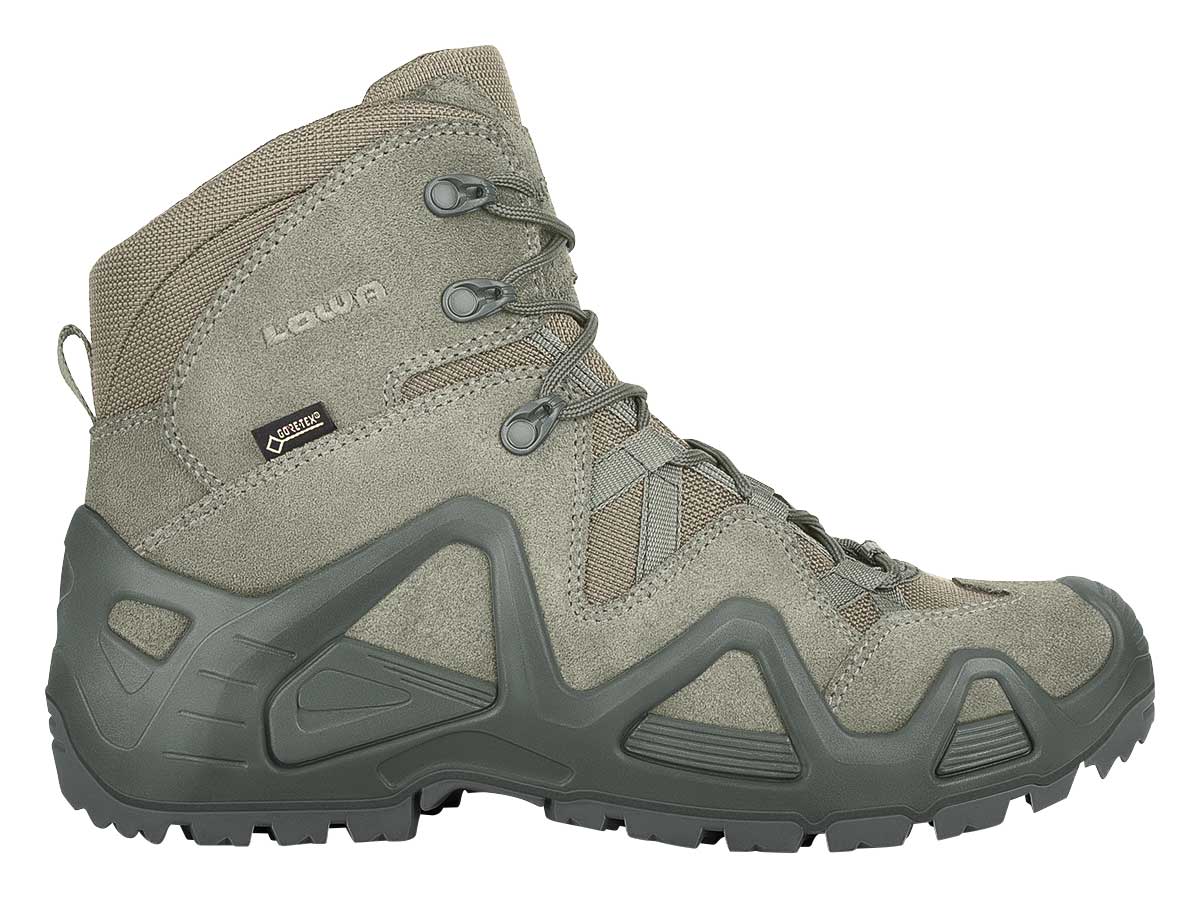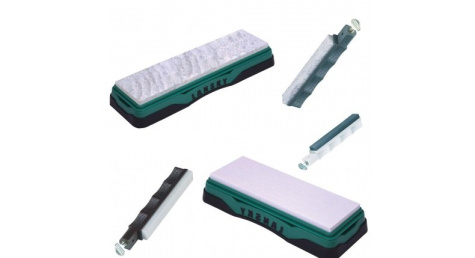How to choose shoes
How to choose shoes, that is the question ... Quality military boots are the basis and their correct choice is therefore very important.

Quality shoes - we often he ARthis phrase. But what does it actually mean and how do you recognize quality shoes? Are quality shoes necessarily comfortable?
What defines quality shoes
The shoe can be of good quality or poor quality according to several criteria:
- Material used - quality material is the basic thing (but even a shoe made of quality materials can be bad in a result)
- Working up of the shoe - it is the pattern of leather, sewing or gluing of individual parts of the shoe, installation of the membrane, etc.
- Shape of the shoe, especially the inner shape
You will often recognize a quality shoe as soon as you put it on. You feel like it is made exactly for your foot. Better manufacturers produce shoes separately for men's feet and separately for women’s one. So how do you recognize a quality shoe? It is made of first-class materials, is well-processed (seams, gluing, cutting, joining of individual parts) and has a appropriate anatomical shape. Only the combination of these three main criteria results in quality, good footwear.
Materials used for shoe uppers
It's interesting, but even today, in the age of nano materials, Gore-tex and other space technology, the basis of quality military boots is still leather. Even if nylon, rubber, or other synthetic materials are used on the shoe, classic tactical/military high boots, such as the Lowa Z8 model, are leather.
If we are talking about leather shoes, then the best companies use the best (usually cowhide) leather chosen by specialists according to very strict requirements. Quality leathers are expensive, so that quality leather shoes are expensive, too. If you see a cheap leather boot, it probably has not the skin of a cow grazing on the Alpine slopes (these are rated as the best). Skin thickness is also important, a quality leather shoe should have a leather thickness of at least 2.5 mm. If the skin is thin, there is a risk of faster damage.
In medium and low shoes, leather no longer has to be the core material and synthetic materials, usually based on nylon ( Cordura ), are used much more. Their advantage is better breathability.
Shoe soles
Military and outdoor boots use two ways to connect the sole to the upper: gluing and injection molding. The glued sole is traditional and the shoe also looks traditional with it. The advantage of the glued sole is the possibility of repair, the so-called re-tripping of the shoe. If you already have the sole worn out, better brands allow you to send the shoe for repair (the old sole will be torn off and a new one stuck). The disadvantage of a glued sole is that it can unstick (but this is very rare at quality shoes), and that it is not possible to better connect the sole to the upper. It's just such a plate on the bottom of the shoe. The injected soles, on the other hand, make it possible to create various shapes, which in practice increase the transverse rigidity, protect the upper from damage and in addition, give the shoes an interesting appearance. A nice example is the injected sole of Lowa Zephyr shoes.

The injected soles are generated in the form into which the upper of the shoe is inserted and the substance which forms the sole is injected. Thanks to this, the connection between the sole and the upper is very strong and at a quality shoe there can be no separation. Perhaps the only disadvantage of the injected sole is that it is not possible to repair it when worn out.
What sole is better - a glued or injected one? Unfortunately, the answer is not so clear, in any case, more and more shoes are equipped with an injected sole and the traditional glued sole is rather in decline. Nevertheless, you will find it on a lot of classic trekking shoes. For footwear where the customer is expected to wear the sole out, repairable glued soles are used.
How to recognize well-crafted shoes
We have been selling military boots for more than ten years, so we already have some experience. Here are some tips on how to get to know a well-crafted/made shoe. First of all, it is good to compare both pieces, i.e. the left and right shoe. A poorly crafted shoe can have a crooked tongue, an asymmetrically glued or a injected sole. If you see glue residues in the joints, this also does not do a credit to the manufacturer. Check also that the seams are where they should be and not damaged. A quality shoe has seams perfect, in straight lines and they are still at the same distance from the end of the stiched material.
Of course, it is harder to control the processing of the shoe inside, ins pite of the fact that he processing of the inside is even more important than that of outside. For low-quality shoes, the lining with a gore-tex membrane may be incorrectly sewn. If you come across something like this in the heel part, you can count on blisters on the heel and also abrasion of the lining. If possible, remove the insole from the shoe and check that everything is fine inside, for example that there is nothing that might bother you when walking. It can be the remains of threads, poorly attached lining and the like. Final advice: the easiest way to recognize a quality shoe is by its seams. If they „run“, it is quite probably a lower quality shoe. Good manufacturers can take care of this.
How to know that the shoe has the right shape
The third hallmark of good footwear is the correct shape of the inner part. The shoe can be made of quality materials and well made, but it is of no meaning if the shape of the shoe does not match the shape of your foot. First of all, if you want to be sure, you need to devote enough time to the choice of shoes and verifying the appropriate shape. Therefore, it is recommended to try both shoes at the same time, tighten the shoes properly and use the type of sock that you will normally wear. Keep your shoes on for at least 10 minutes. Of course, it would be ideal to go for a few kilometers, but in practice it is not possible, unless you want to walk around the store like a bear in the corral. In any case, it is a well-known fact that when walking for a longer period of time with a load, the foot is perfused and enlarged. Thus, it is recommended to buy shoes half a number larger.
Lower shoes can be tested by sticking a thumb behind the heel. It is not possible to test this with high boots, so you have to rely on the feeling. Furthermore, the shape of the shoe should be such that when you step on an sloping surface (it is to imitate walking downhill), your instep rests on the shoe and not your toes. To do this, of course, you need to have the shoe properly tightened. If the shoe is too large, the foot in the instep will not rest on the instep part of the shoe. When walking downhill, you can count on blisters on your fingers. Believe me, this is not pleasant.
So the shoe should not be tight, but it should also not be too loose. In this case, there would be a risk of blisters and, in addition, abrasion of the lining, typically on the heel. And another unpleasant consequence is that if you cut the lining due to an incorrectly chosen size, it can be and very likely will be a reason to reject the claim. So watch out, choose the size carefully!
In addition to the length of the shoe, there is another parameter, namely its width. Some people have unusually wide walks, some people have narrow ones. Those with wider feet have the slight advantage that some brands (but not many) produce shoes in two widths - standard and wide. In any case, if your shoe is narrow, you'd better look for another. It depends on what form the manufacturer uses, another manufacturer may use a form more suitable for your foot.
The shape of the tip and the height of the instep are other criteria that need to be followed. Generally speaking, it is better to have a wide tip in which the fingers are not pressed against each other. Narrow toe means a typical problem of bad shoes - blisters. And as for the instep, it should be just right. Under no circumstances should you push, remember that your leg can increase by up to half a number as you walk. If the instep is too high, you lose support when walking downhill and you know the consequences ...
With quality shoes, such as the Lowa brand ones, you will know when you put them on for the first time that the designers place great emphasis on the right shape. That is why they also produce shoes in men's and women's designs. Male and female feet are different, so it's perfectly logical. But only better brands do it, the others have only one type of shoe - men's.
Conclusion
We always say to our customers an old military lesson: there are only two important gear components - shoes and a backpack. And if I have to choose only one of these two, that must be of high quality, they will be quality military boots. You may be the most tacticool in the world and have gear for tens of thousands, but if you have the wrong shoes, after a few kilometers, you have done with it after a few dozen at the latest, or you will suffer terribly. And remember, you can have a shoe of good quality (and expensive), but if it does not fit to your shape, is big or small for you, it is the same or even worse than a shoe made of the wrong materials or poorly made.
The price of the shoe is just such a hint. There are quite good quality shoes for good money. With more expensive shoes, you can be sure that the materials and workmanship will be at a good level. You should definitely avoid completely unknown non-branded shoes, which are also suspiciously cheap. It's not worth the risk. The choice is though up to each of us.



